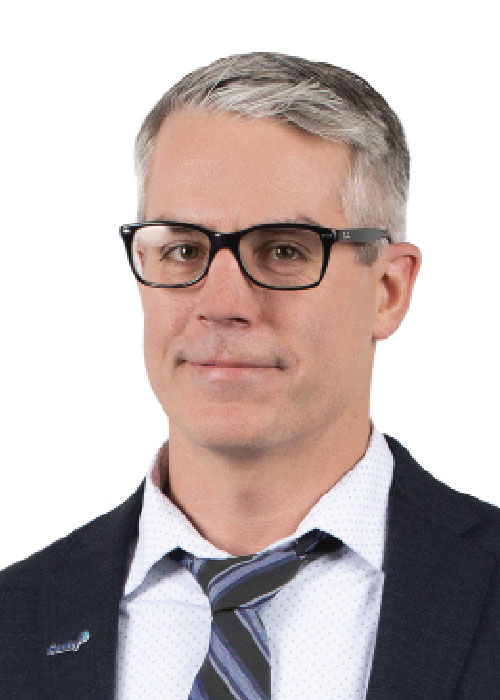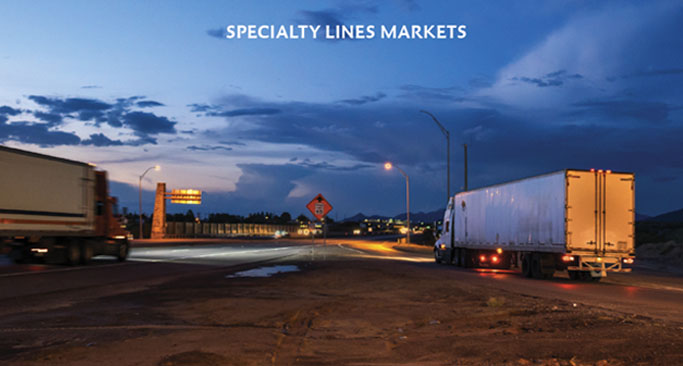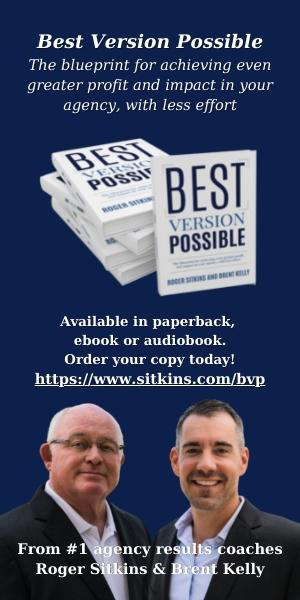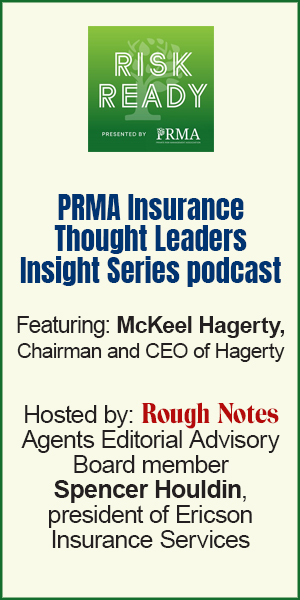A persistently hard market
makes for hard choices
By Joseph S. Harrington, CPCU
“Plus ça change, plus c’est la même chose.”
That’s a famous French phrase for “the more things change, the more they remain the same.” If you want to appear sophisticated while discussing commercial auto insurance, you can drop that line at a cocktail party.
It seems that everything has changed about commercial trucking: Vehicles are designed more safely with sensors implanted in them to assist with driving and navigation. More and more vehicles and drivers are monitored remotely by vehicle telematics. Increasingly sophisticated fleet management systems reduce costs and make for enhanced vehicle maintenance. Automated, driverless vehicles are starting to hit the road, meaning there’s at least one less person to get hurt (the displaced driver).
For all that, commercial auto insurers struggle to make a profit, and a lot of them lose that struggle, choosing to let more profitable lines make up the difference or abandoning the market entirely, as Nationwide did in July 2023.
Despite several years of rate hikes and loss control initiatives, the commercial auto combined ratio for the industry as a whole remains well over 100, the worst performing of any major line of coverage, with no indication when or if things will get better.
For agents and brokers serving motor carriers or clients with trucking exposures, this will mean continued effort for an indefinite time to come up with expedient ways to find affordable coverage. Until further notice, a lot of energy will be needed just to stay in place.
Multiple carriers
By now, producers are well accustomed to needing multiple carriers to provide the breadth of coverage and level of limits once available from a single insurer.
“Typically, it’s best to package all lines of coverage with one insurer,” says Jeanne Beamer, branch manager of JM Wilson, a managing general agency and surplus lines broker. “In a hard market, we often have to approach different insurers for different lines of coverage to achieve a more competitive bottom line.
“This approach can lead to more out of pocket costs in the event of a claim,” she notes. “For example, the single combined deductible often offered in a package policy from one carrier is usually not available when you split up the coverage.”
Since rate increases alone are not enough to achieve and maintain profitability, Beamer says insurers are adjusting their pricing and product features in other ways.
“As insurers struggle with profitability in trucking, rate increases can make it difficult to compete,” she adds. “Options insurers are exploring include increased deductibles and policy form changes.
“For example, in place of one cargo form covering many different commodities, some insurers are reverting to a basic form with more limited coverage, with options for buying back coverage for commodities such as copper and perils such as refrigeration breakdown.”
If there’s a bright light on the horizon, Beamer sees it in the prospects for better business conditions for truckers.
“The trucking industry has been dealing with low freight volumes, depressed rates, and rising operational costs for more than two years,” she says. “Diesel prices have dropped in the past year and freight volumes are expected to grow in 2025. These are positive indicators for the future of trucking, although the impact of potential tariffs is still unknown.”
Liability woes
Improved business conditions and refined property coverage provisions will mean little, however, if commercial auto risk cannot overcome the growing weight of liability claims.
“The persistence of the hard market is really a function of liability claim trends, specifically for bodily injury,” says Nick Saeger, assistant vice president for transportation products and pricing at Sentry Insurance.
“No matter what the market conditions are, insurers in the trucking space have always struggled with the ability to achieve profitability.”
—Jeanne Beamer
Branch Manager
JM Wilson

“With loss severity routinely increasing by near double-digit levels, and frequency returning to pre-COVID levels, rates need to increase by double digits just to keep pace. To return to profitability, rates would need to go even higher.”
In response to these conditions, Sentry and other carriers are redoubling their efforts in state capitals to reform civil liability. “Our government affairs team is working with state legislatures across the country to fight legal system abuse,” Saeger says. “There have been encouraging results recently in Florida and potential for more in the future. This could help to slow the increase of loss costs.”
Beamer agrees that “tort reform is a key factor in the future of insurer profitability, especially in the trucking market. Caps on settlements and regulation of litigation financing would have a positive impact on insurer profitability,” she says. “That, in turn, would bring down the cost of coverage for trucking companies.”
Limits of telematics
As for its own underwriting operation, Saeger says that Sentry continues to promote incorporation of data telematics for monitoring the performance of vehicles and drivers.
“We continue to focus on reporting claims quickly,” he says. “Reporting claims earlier and with more detail makes for better and faster claims handling and better outcomes for motor carriers and claimants.”
However, not everyone is on board with the telematics revolution, according to Beamer.
“Some insurers see telematics as the way of the future, but as problematic in some ways,” she says. “First off, many trucking companies are not eager to share information with insurers.
“Another challenge is interpreting the massive amount of data that’s gathered,” she says. “Analysis of telematic data does not guarantee profitability. Insurers have more data than ever before, and they rely heavily on predictive modeling to determine who can be quoted and at what rate.
“But recent trends in nuclear verdicts and inflation have had a negative impact on an already inexact science of determining rates.”
Drive for data
A persistently hard market aggravates the basic dilemma agents and brokers face as they seek to balance the interests of their clients with their carrier providers.

“Reporting claims earlier and with more detail makes for better and faster claims handling and better outcomes for motor carriers and claimants.”
—Nick Saeger
Assistant Vice President,
Transportation Products and Pricing Sentry Insurance
If the initiatives of Verisk are any indication, commercial auto carriers are marshalling their efforts to identify and eliminate any and all forms of “premium leakage”; that is, any means by which the full amount of premium reflecting the extent of an exposure is not accounted for and collected. (Verisk is a leading organization for supplying data, policy forms, and policy rating information to U.S. property/casualty insurers.)
In its suite of tools developed for commercial auto insurers, Verisk essentially pushes back against imprecise and incomplete information supplied by applicants and insureds. Among other things, Verisk utilizes public and private data to rigorously identify and monitor the full extent of an insured’s ownership and use of vehicles and its radius of operations. According to Verisk, radius of operations and private use of company vehicles are factors commonly under-reported by insureds.
Whether they use any or all of Verisk’s services, commercial auto insurers have automated access to data not previously available to them. This includes reports of recent citations or citations from outside jurisdictions that may not appear on state motor vehicle reports, as well as reports indicating financial stress or fraudulent activity.
The drive for data in commercial auto underwriting admittedly puts independent agents and brokers in an awkward position. Faced with escalating operating and insurance costs, their clients are also finding it harder to predict the volume of business they will have to insure. Yet prudence and professionalism demand that their insurance producers encourage their clients to report the fullest potential extent of exposure.
It’ll take time
When asked what it will take to get commercial auto to a point of stable profitability, Saeger responds with what we already know: “It will take time.
“Consistently troublesome combined ratios are running into the headwinds of double-digit loss trends,” he says. “This means that rate increases will need to continue for several years.
“Likewise, any progress on legal reform will take time to bring bills to the floor of the legislatures and get them passed. Then it will take time for those reforms to work their way into the legal process.”
It’s really nothing new, says Beamer. “No matter what the market conditions are, insurers in the trucking space have always struggled with the ability to achieve profitability,” she says. The more things change …
For more information:
JM Wilson
jmwilson.com
Sentry Insurance
sentry.com
Verisk
verisk.com
The author
Joseph S. Harrington, CPCU, is an independent business writer specializing in property and casualty insurance coverages and operations. For 21 years, Joe was the communications director for the American Association of Insurance Services (AAIS), a P&C advisory organization. Prior to that, Joe worked in journalism and as a reporter and editor in financial services.






